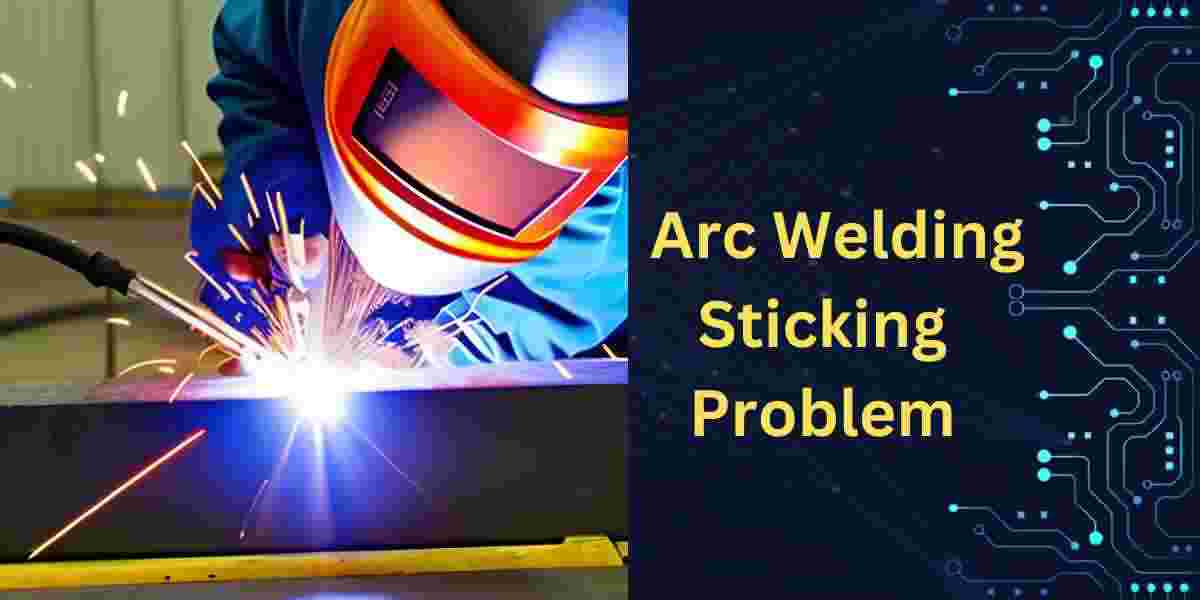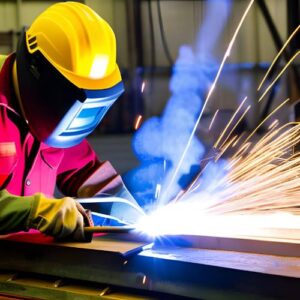Table of Contents
Arc welding is a widely used technique for joining metals together, providing strength and durability to various structures. However, even experienced welders encounter challenges, one of which is arc welding sticking. In this article, we will delve into the root causes of this problem and provide practical solutions to overcome it effectively.
Understanding Arc Welding
Arc welding involves using an electrical arc to generate the heat needed to melt and fuse metal pieces together. The process uses an electrode, which can be consumable or non-consumable, and a workpiece to create the weld joint. When performed correctly, the weld forms a strong bond that can withstand heavy loads and stresses.
What is Arc Welding Sticking?
Arc welding sticking, also known as electrode sticking or arc welding stubbing, occurs when the electrode adheres to the workpiece during welding. This can lead to interrupted welds, uneven bead formation, and frustration for the welder. Understanding the causes of sticking is crucial to prevent and resolve the issue effectively.
Common Causes of Arc Welding Sticking
1. Incorrect Electrode Angle
The angle at which the electrode is held relative to the workpiece plays a significant role in arc welding. If the angle is too steep or too shallow, sticking may occur. Maintaining the recommended electrode angle ensures a stable arc and smoother welding.
2. Contaminated Electrode
Contaminated electrodes, either due to exposure to dirt, oil, or moisture, can lead to sticking. Proper electrode handling and storage are essential to keep them free from contaminants.
3. Moisture in Electrode Coating
Moisture in the electrode’s coating can cause steam explosions during welding, leading to sticking issues. Welders must store electrodes in dry conditions to avoid this problem.
4. Inconsistent Current Settings
Inaccurate current settings can affect the arc’s stability and result in sticking. Adjusting the welding machine to the appropriate current range is vital for smooth welding.
5. Poor Ground Connection
A weak or poor ground connection can lead to erratic arcs and sticking. Ensuring a good ground connection between the workpiece and the welding machine is crucial.
6. Insufficient Arc Length
An excessively short or long arc length can cause sticking. Maintaining the correct arc length based on the electrode diameter and welding conditions is essential.
7. Joint Preparation Issues
Inadequate joint preparation, such as insufficient cleaning or improper beveling, can contribute to sticking during welding.
8. Welding Machine Problems
Problems with the welding machine, such as faulty cables or improper settings, can lead to sticking. Regular maintenance and inspection of equipment are necessary to prevent such issues.
How to Prevent Arc Welding Sticking
1. Proper Electrode Handling and Storage
Store electrodes in airtight containers in a dry environment to prevent moisture absorption and contamination.
2. Maintaining Dry Electrodes
Use electrode ovens to dry out any absorbed moisture before welding to avoid steam-related sticking problems.
3. Adjusting Current Settings
Calibrate the welding machine to the recommended current levels for the specific electrode and workpiece thickness.
4. Ensuring Good Ground Connection
Clean the workpiece surface and ensure a solid connection between the work clamp and the workpiece.
5. Maintaining the Correct Arc Length
Adjust the arc length according to the electrode’s diameter and the welding parameters to prevent sticking.
6. Adequate Joint Preparation
Clean, bevel, and properly fit the joint to ensure smooth welding and prevent sticking.
7. Regular Maintenance of Welding Equipment
Perform routine checks on welding machines and accessories to identify and address potential issues before they lead to sticking.
Troubleshooting Tips
1. Check Electrode Quality
Inspect electrodes for signs of damage or contamination before use.
2. Examine Electrode Angle
Ensure the correct electrode angle during welding to maintain a stable arc.
3. Verify Electrode Dryness
Double-check that electrodes are dry and free from moisture.
4. Reassess Current Settings
Adjust the welding machine’s current settings if the arc is unstable or if sticking occurs.
5. Inspect Ground Connection
Inspect the ground connection for cleanliness and secure attachment.
6. Review Arc Length
Maintain the appropriate arc length to avoid sticking issues.
7. Examine Joint Preparation
Ensure the joint is adequately cleaned and prepared for welding.
8. Perform Welding Machine Maintenance
Regularly inspect and maintain the welding equipment to prevent any malfunctions that could lead to sticking.
Conclusion
The arc welding sticking problem can be frustrating for welders, but with the right techniques, it is entirely manageable. By optimizing welding parameters, maintaining the correct arc length, and using clean electrodes, welders can avoid sticking issues and achieve high-quality welds consistently.
Remember, attention to detail and regular equipment maintenance are essential to ensuring a smooth and efficient welding process. With these tips in mind, welders can tackle the sticking problem and excel in their welding projects.
So go ahead and put these solutions to the test. Happy welding!
FAQs about Arc Welding Sticking Problem
Q.1 Why does my arc welder keep sticking?
Answer: Arc welders may keep sticking due to various reasons, such as incorrect electrode angle, contaminated electrodes, moisture in the electrode coating, inconsistent current settings, poor ground connection, insufficient arc length, joint preparation issues, or welding machine problems. Proper handling, storage, and maintenance of equipment can help prevent sticking.
Q.2 Why is my arc rod sticking?
Answer: An arc rod may stick to the workpiece because of factors like incorrect electrode angle, electrode contamination, or excessive moisture in the coating. Regularly inspecting and maintaining welding equipment can resolve this issue.
Q.3 How do you strike an arc without sticking?
Answer: To strike an arc without sticking, ensure proper electrode angle, use dry and uncontaminated electrodes, adjust current settings accurately, and maintain the correct arc length. Additionally, ensure a clean and well-prepared joint.
Q4. What causes weld not to stick?
Answer: Welds may not stick due to inadequate joint preparation, incorrect electrode handling, contaminated electrodes, poor ground connection, or welding machine problems. Addressing these factors will help improve welding performance.


2 thoughts on “Solving Arc Welding Sticking Problem: 8 Tips and Techniques”